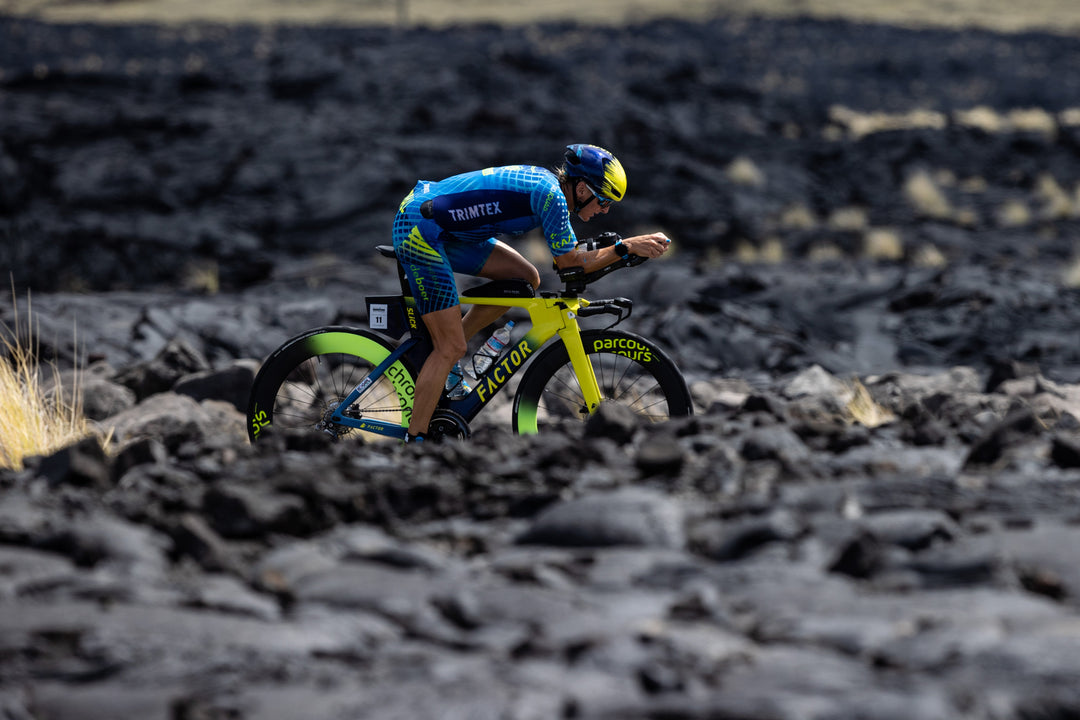Guest post: pro triathlete Caroline Livesey on why to upgrade
I can vividly remember the first time I rode deep section carbon wheels. Not because of the incredible increase in speed, nor the wonderful purring noise they make, although both of these also stick in my mind. I remember it because of the anxiety. I felt like I was somehow going to be unable to control my bike; that they were too advanced for me. I was in the lucky situation of being “made” to use them, as my boyfriend (now husband) Mark was not going to take no for an answer. Five minutes riding them, and I have never looked back. But I wonder how long it would have been had he not taken that step for me.

So I wanted to do some myth busting and hopefully break down some of that anxiety for others in the same position.
Myth 1: They are really heavy:
It’s just not true, they are in fact lighter. A Chrono wheel set with 77mm front deep rim and 86mm rear weighs 1,625g. Some cheap road wheels, for example the Vision Team 30, actually weigh more at 1,920g. If you buy a good set, eg. the Parcours Paniagua which is an alloy rim wheelset, they weigh 1,590g. I mean, the difference is a couple of slugs of water from your bottle!

Myth 2: My bike will be difficult to handle, I might get blown off.
In my experience it is the opposite. A TT bike feels a lot more stable even in strong winds when it is being powered along by a rear disc wheel and a well-designed deep rim front wheel. A disc wheel (and a deep rim rear) changes the centre of force of the bike, shifting it towards the rear where your weight is, providing a more reliable ride. The front wheel is typically where the “twitching” is felt in strong winds. To overcome this, you can just chose a shallower section wheel to start with (like the Passista). However, the Chrono has recently been redesigned to reduce this side force by 15%, while maintaining the aerodynamics. It is noticeably more stable. Carbon wheels are also stiffer than aluminium rims so your bike will also feel more responsive. But the thing is, you have to do your research and buy wheels that are well designed. There are plenty on the market which are not, and for those I can vouch that they do not ride smoothly at all.
Myth 3: They are not worth the investment for a small gain in performance.
Deep section wheels make a noticeable difference to your speed. There are lots of studies out there to demonstrate this, but one I particularly liked was a test done by Cycling Weekly in 2016.
https://www.cyclingweekly.com/videos/cycling-tech/how-much-faster-aero-wheels-video
It’s a good test because it was performed outside in an environment similar to that which you will be racing in. The bottom line? Deep section wheels can make your bike up to 2 kph faster for the same effort. So if you are riding around 6 hours for an Ironman bike course, that will equate to 24 minutes faster at the same effort. That is not a small gain. In fact, you could have an icecream in transition and still finish the race 10 minutes faster.
Myth 4: I am not good enough for them.
Is there a perception that you have to reach a certain level before you are somehow “allowed” to invest in a nice set of race wheels? Because in reality, prices have come down in the last 5 years so these wheels are more affordable, look fabulous, and have all the benefits I have listed. So it doesn’t matter if you are trying to get round a 70.3 or Ironman within the cut off time, or gunning for a top spot in your AG at an ITU sprint event, you have equal need for the free speed offered by this upgrade. Plus, better handling reduces fatigue in the rest of your body. Shoulders are less tired, lower back and core are not stressed as much, so you are more ready for that run when you finally d get off your bike.
The verdict; it’s probably some of the best money you can spend on an upgrade. But be careful, do your research and buy wheels with science behind them – like Parcours of course!
Caroline Livesey
@caroline.livesey




